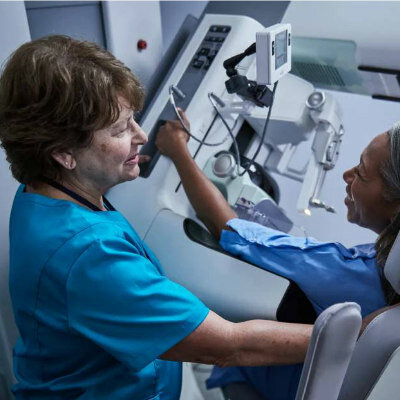Mammography System’s Algorithm Identifies Scattered Radiation
By MedImaging International staff writers
Posted on 16 Jan 2013
A mammography system features a new software-correcting scattered radiation algorithm to provide up to 30% less radiation dose to the patient. Posted on 16 Jan 2013
Siemens Healthcare’s (Erlangen, Germany) Mammomat Inspiration Prime Edition mammography system lowers dose by replacing the standard scatter radiation grid with a new algorithm for progressive image reconstruction. The algorithm identifies scatter-causing structures and calculates a corrected image, enabling clinicians to obtain high-quality images with up to 30% less dose. The development of systems such as the digital full-field Mammomat Inspiration is an objective of the Siemens Healthcare Sector’s global “Agenda 2013” initiative.
The radiation dose, in digital X-ray breast imaging, passes through the scanned breast to a detector. Primary radiation supplies the data required to generate the X-ray image, while scattered radiation is absorbed by special grids positioned between the breast and the detector. Unfortunately, these scatter grids also absorb part of the key primary radiation, forcing clinicians to use a higher dose to capture images of desired quality. Because mammography involves regular screening of healthy women, minimizing dose is extremely critical.
Siemens Healthcare’s new reconstruction algorithm for the system—known as Prime (progressive reconstruction, intelligently minimizing exposure)—removes the need for the traditional scatter radiation grid. The Prime algorithm then corrects the scattered radiation by identifying scatter-causing structures and recalculating the image. The primary radiation that radiologists rely upon remains intact. Therefore, a grid is no longer necessary, and lower doses are sufficient to generate high-quality images. The grid-free imaging technology of the Mammomat Inspiration Prime Edition offers reduced dose compared to the Mammomat Inspiration, depending on the thickness of the patient’s breast tissue.
Lynn Blackburn, business manager for mammography, surgery, and urology at Siemens Healthcare, stated, “This evolution in mammography technology is an exciting development for the field, and we look forward to bringing it to the UK marketplace. Currently, nearly two million women are screened annually with some 15,000 cancers detected so it is of huge importance that we can make quantifiable dose savings but still maintain excellent image quality.”
Available in 2013, the Mammomat Inspiration Prime Edition is based on the modular Mammomat Inspiration platform for screening, diagnostics, biopsy, and tomosynthesis used by hospitals and clinicians since 2007. Hospitals and clinics have the option of buying the basic equipment, upgrading biopsy or tomosynthesis later when there is a need.
Related Links:
Siemens Healthcare














